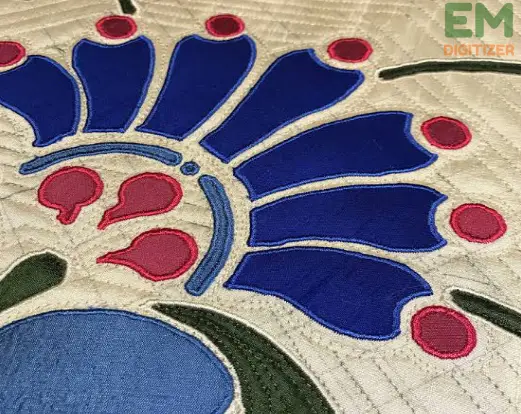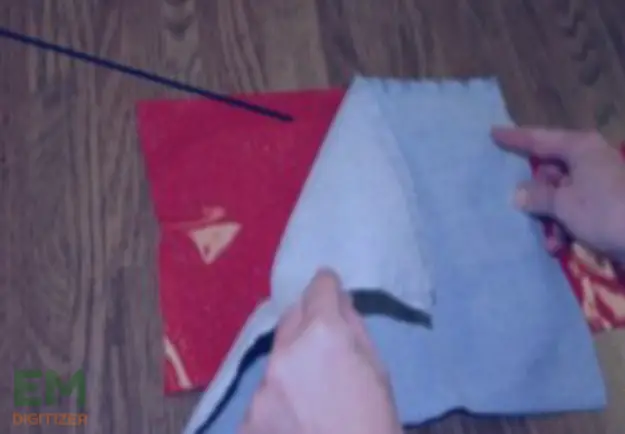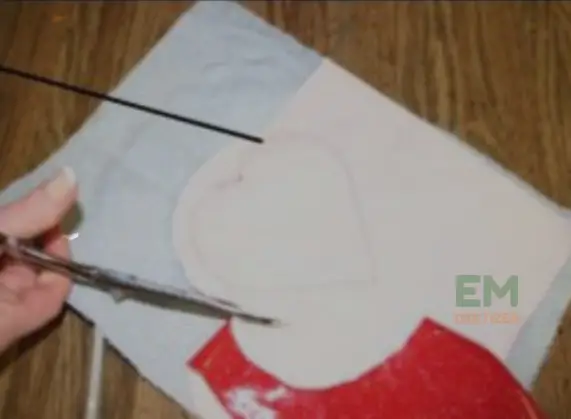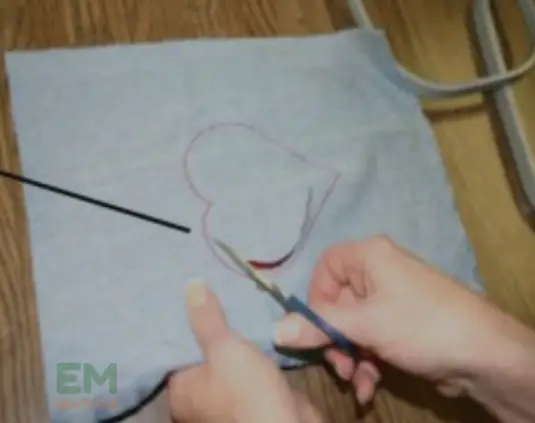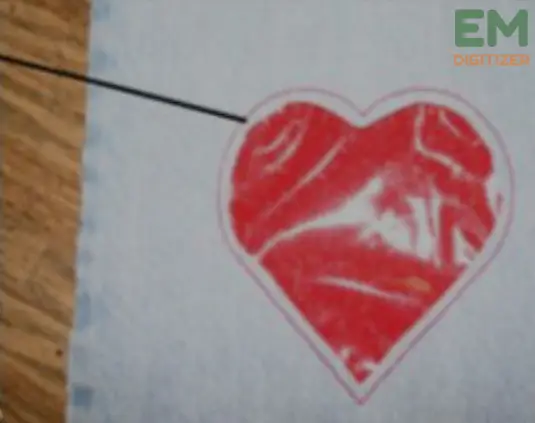How to Do Reverse Applique Machine Embroidery – Complete Tutorial

How can you do that if you want your applique to be fashionable enough to show off your devotion? To create something unique, reverse applique is available.
In this article, I’m going to talk you through the highly intriguing method of reverse applique, including what kind of cloth to use and the different types of stitches that can be used.
thread tension guide
thread tension
sewing machine thread tension
sewing machine thread tensioner
thread tension chart
thread tension dial
thread tension gauge
bobbin thread tension
thread tension on sewing machine
thread tension sewing
adjusting thread tension
embroidery thread tension gauge
how to adjust thread tension
tajima thread tension gauge
thread tension issues
thread tension sewing machine
top thread tension
upper thread tension
3 thread overlock stitch tension
3 thread serger tension
4 thread serger tension settings
adjusting thread tension on a sewing machine
adjusting thread tension on brother sewing machine
adjusting thread tension on sewing machine
adjusting thread tension on singer sewing machine
adjusting top thread tension
auto thread tension sewing machine
automatic thread tension sewing machine
bernina high thread tension bobbin case
bernina thread tension
bernina upper thread tension
bobbin thread tension gauge
bobbin thread tension too loose
bottom thread tension
bottom thread tension too loose
box three chain tensioners
brother cs6000i thread tension
brother jx2517 thread tension
brother pe770 thread tension
brother sewing machine thread tension
brother sewing machine upper thread tension
brother thread tension
brother upper thread tension
brother xm2701 thread tension
compression tension and shearing are three types of
consew 206rb thread tension
consew thread tension
correct thread tension
crb thread tension device
determine the tension developed in the three cables
digital thread tension gauge
diy thread tensioner
drum tension rod thread size
embroidery machine thread tension
embroidery thread tension
embroidery thread tension guide
find the tension in each of the three cables
fixing thread tension sewing machine
free motion quilting thread tension
glide thread towa tension
how to adjust bobbin thread tension
how to adjust lower thread tension
how to adjust sewing machine thread tension
how to adjust tension on bobbin thread
how to adjust the bobbin thread tension
how to adjust the thread tension on sewing machine
how to adjust thread tension on a sewing machine
how to adjust thread tension on a singer sewing machine
how to adjust thread tension on brother embroidery machine
how to adjust thread tension on brother sewing machine
how to adjust thread tension on janome sewing machine
how to adjust thread tension on kenmore sewing machine
how to adjust thread tension on sewing machine
how to adjust thread tension on singer sewing machine
how to adjust top thread tension
how to adjust upper thread tension
how to fix bobbin thread tension
how to fix sewing machine thread tension
how to fix the thread tension on a sewing machine
how to fix thread tension
how to fix thread tension on brother sewing machine
how to fix thread tension on sewing machine
how to fix thread tension on singer sewing machine
how to fix top thread tension
how to fix upper thread tension
how to loosen thread tension
how to loosen thread tension on sewing machine
how to set thread tension
how to set thread tension on sewing machine
how to thread tension sewing machine
how to tighten top thread tension
how to use tajima thread tension gauge
how will you adjust tension on bobbin thread
how will you adjust tension on lower thread
industrial sewing machine thread tension
janome sewing machine thread tension
janome thread tension
janome thread tension problem
janome thread tension troubleshooting
juki ddl 8700 thread tension
juki thread tension
juki thread tension problems
kenmore sewing machine thread tension
liquid tension experiment three minute warning
list three causes of tension in europe in 1914
loose thread tension
lower thread tension
lower thread tension too loose
needle thread tension
needle thread tension assembly
needle thread tension dial
pfaff thread tension
ricoma thread tension
rod building thread tensioner
rod wrapper thread tensioner
rod wrapping thread tensioner
serger thread tension
Keyword
reverse applique
applique reverse
pippa reverse applique puffer
alabama chanin reverse applique
applique and reverse applique
double reverse applique
hawaiian reverse applique
hmong reverse applique
how do you do reverse applique
how to do reverse applique
how to do reverse applique by hand
how to do reverse applique step by step
how to reverse applique
how to reverse applique step by step
modern reverse applique
mola reverse applique
negative reverse applique
raggedy reverse applique
raw edge reverse applique
reverse alphabet for applique
reverse applique alabama chanin
reverse applique artists
reverse applique by hand
reverse applique circles
reverse applique definition
reverse applique designs
reverse applique embroidery designs
reverse applique letters
reverse applique machine embroidery designs
reverse applique method
reverse applique patterns
reverse applique patterns free
reverse applique quilt
reverse applique quilt patterns
reverse applique quilting techniques
reverse applique step by step
reverse applique sweatshirt
reverse applique t shirt
reverse applique technique
reverse applique tutorial
reverse appliqué
west elm reverse applique quilt
what is reverse applique
anita goodesign reverse applique
champion reverse weave c applique hoodie
mola reverse applique technique
reverse applique heart
reverse applique history
reverse applique instructions
reverse applique tutorial youtube
reverse applique using freezer paper
reverse wool applique
step by step reverse applique
west elm reverse applique duvet
about reverse applique
advantages of reverse applique
african quilting reverse applique
african quilting reverse applique elephant’s foot
african reverse applique
alabama chanin negative reverse applique
alabamachanin reverse applique
alison glass reverse applique
all about reverse applique
angela walters reverse applique
anna maria horner reverse applique
applique pattern reva roark stewart
applique reverse applique
applique techniques reverse
apply tucked reverse appliqué technique
back stitch reverse applique
backstitch reverse applique
best scissors for reverse applique
blanket stitch reverse applique
champion reverse weave script applique crewneck sweatshirt
champion reverse weave script applique pullover hooded sweatshirt
clever reverse applique
curved snips to cut fabric reverse applique
dan rouse reverse applique
define reverse applique
define reverse applique in art
definition of reverse applique
definition of reverse applique in textiles
definition of reverse appliqué
double reverse applique download
embroidering on reverse applique tutorial
eye of the beholder reverse applique
famous reverse applique artists
fleece reverse applique
flower belle flower border applique pattern reva roark stewart
fons and porter reverse applique
free reverse applique quilt patterns
freezer paper reverse applique
fusible reverse applique quilting
hand painted reverse applique clothing
hand stitched reverse applique
hmong reverse applique animals
hmong reverse applique for sale
hmong reverse applique patterns
homg reverse applique
how do i reverse my design for fushible applique
how do you make reverse applique
how is reverse applique done
how to alabama chanin reverse applique
how to do negative reverse applique
how to do reverse applique on a sewing machine
how to do reverse applique on embroidery machine
how to do reverse machine applique
how to do reverse wool applique
how to embroider reverse applique
how to make reverse applique
how to make reverse applique t shirt
how to reverse applique a circle
how to reverse applique by hand
how to reverse applique on knit fabric
how to reverse applique patterns
how to reverse applique shirt
how to reverse design for fusible applique
how to sew reverse applique
in the hoop reverse applique
james fox reverse applique
jan mullins reverse applique
karla herrin reverse applique
kuna indian applique hmong reverse applique
layered reverse applique
leather reverse applique
machine embroidery reverse applique
machine reverse applique technique
made in reverse applique
man sewing reverse applique
marion browning reverse applique
mexican reverse applique embroidery designs
milwaukee mt368-xl reverse applique hooded sweat shirt xl
modern reverse appliqué
nancy zieman reverse applique
natalie chanin reverse applique
patterns for reverse applique
picture windows reverse applique tool
pile and plunder reverse applique
process of reverse applique
quilt as you go reverse applique
quilt in a day reverse applique
quilt reverse applique
quilting is my therapy reverse applique
quilting man pineapple reverse applique
raggedy reverse applique book
raggedy reverse applique instructions
reva roark stewart applique pattern
reva roark stewart flower bell flower border applique pattern
reverse applique art
reverse applique artist
reverse applique by machine
reverse applique christmas designs
reverse applique circle
reverse applique circle quilt
reverse applique circles by machine
reverse applique civil war corps flag
reverse applique civil war flag
reverse applique clothing
reverse applique curtain
reverse applique cut work
reverse applique deer
reverse applique duvet cover & shams
reverse applique embroidery how to
reverse applique embroidery tshirt
reverse applique equipment
reverse applique facts
reverse applique fashion
reverse applique felt
reverse applique fleece
reverse applique folk art
reverse applique fons and porter
reverse applique for t shirt
reverse applique fraying
reverse applique free patterns
reverse applique hawaii
reverse applique heart in hand
reverse applique heart in hand motif
reverse applique heart pillow
reverse applique heart youtube
reverse applique hearts
reverse applique heat and bond
reverse applique hmong
reverse applique ideas
reverse applique in the hoop
reverse applique instructions free
reverse applique items
reverse applique jacket
reverse applique jeans
reverse applique knit
reverse applique leaf patterns
reverse applique leather
reverse applique leutton postle
reverse applique luetton postle
reverse applique meaning
reverse applique mesh romper
reverse applique methods
reverse applique mola
reverse applique needle turn
reverse applique on card stock
reverse applique on sweatshirt
reverse applique patern
reverse applique pinterest
reverse applique placemats
reverse applique process
reverse applique process meaning
reverse applique quilt blocks
reverse applique quilting
reverse applique quilting patterns
reverse applique quilting tutorial
reverse applique rag quilt
reverse applique scissors
reverse applique sewing pattern
reverse applique shirt
reverse applique shirt tutorial
reverse applique single layer
reverse applique site youtube.com
reverse applique south american
reverse applique square pattern instructions
reverse applique square patterns
reverse applique squares
reverse applique stained glass patterns
reverse applique stencils
reverse applique steps
reverse applique stitch
reverse applique stitching
reverse applique stocking
reverse applique sweatshirt pattern
reverse applique sweatshirts
reverse applique t-shirt
reverse applique t-shirt tutorial
reverse applique technique paper
reverse applique template
reverse applique templates
reverse applique textile artists
reverse applique tiny circles
reverse applique tshirt
reverse applique tutorial embroidery machine
reverse applique tutorial quilting
reverse applique unicorn
reverse applique video
reverse applique what is it
reverse applique wiki
reverse applique wikipedia
reverse applique with freezer paper
reverse applique with multi colors
reverse applique with rob appell april 7
reverse applique with three layers
reverse applique wonder under light
reverse appliqued civil war flag
reverse appliqued cotton
reverse appliqued curtain
reverse appliqué and negative reverse appliqué
reverse appliqué history
reverse appliqué knit
reverse embroidery applique
reverse hand applique
reverse hand applique tutorial
reverse image applique
reverse needle turn applique
reverse quilting applique
rob appell reverse applique
san blas reverse applique
south american reverse applique
stained glass reverse applique quilt
stenciling fabric reverse applique
sweatshirt reverse applique
t shirt reverse applique
the meaning of reverse applique
traditional reverse applique
types of reverse applique
utube reverse applique
utube reverse applique hawaiian style
what does reverse applique do
what does reverse applique mean
what is a reverse applique
what is a reverse applique embroidery machine
what is negative reverse applique
what is reverse applique art definition
what is reverse applique dictionary
what is reverse applique in molas
what is reverse applique in textiles
what is reverse applique quilting
what is reverse applique used for
what is reverse applique wikipedia
what is reverse wool applique
what is the definition reverse applique
what is the difference between applique and reverse applique
what is the meaning of reverse applique
what is the meaning of reverse appliqué
what is the reverse applique mean
what latin.country.makes.reverse.applique
what latin.counyry.makes.reverse.applique
what reverse applique means
where does reverse applique come from
why applique alphabet letters in reverse
youtube reverse applique
youtube reverse applique mola
youtube reverse applique videos
Table of Contents
Applique Embroidery VS Reverse Applique
In appliqué embroidery (Click here if you want to embroider applique designs), an additional cloth is placed over the backdrop fabric and the two are stitched together to produce a distinctive embroidery. Patches are kind of used in applique embroidery to produce the design on huge clothes. This needlework is used to create items like pillows, curtains, and garments.
In contrast, you work with reversed fabric while using reverse applique, as the name suggests. Before cutting the top layer of cloth so that the background design is visible, extra material is first layered underneath the primary fabric.(Here is the article about all types of embroidery fabrics)
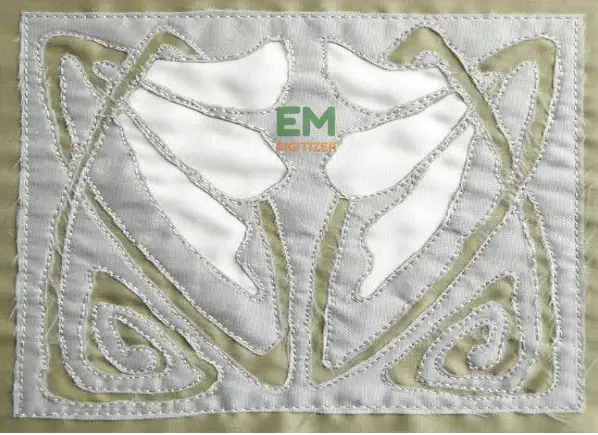
For the top and bottom, you can use applique fabric in multiple colours and your favourite stitches for assistance. Reverse applique for quilted items like towels and aprons, as well as apparel, looks so distinctive.
If one is assigned the task of creating a complex and elaborate embroidery design, one can easily seek reverse applique assistance. Although some effort is required, once you’ve mastered reverse applique, you’ll be able to use it to embroider shirts, jeans, and many other items.
Before I begin the tutorial, let me first explain the benefits of reverse applique, when it is appropriate to use it, and what kind of fabric is suitable for creating this craft.
Here is a complete guide on How To Digitize Disney appliqué design using SewArt
Which Type Of Applique Suits Best To Your Embroidery Projects?
The task of reverse applique is challenging. Most embroider run into difficulty with just one error. But this process goes so smoothly because of practice and patience. Applique can be done manually or mechanically. The best match for your embroidery projects is up to you to decide.
The type of fabric you’re using and the design you want to embroider are the only factors that matter. Follow the instructions precisely for the best results with reverse applique.
You may produce excellent outcomes while staying within your budget, whether it’s for apparel or home décor. One benefit of machine-based reverse applique is the ability to increase desired project dimensions. The appliqué design cannot be fixed if there is even a small error in the project.
Suitable Fabrics for Reverse Appliques
To make something unique, appliqué cloth is added as a base and is then stitched together.
The best fabrics for reverse applique are listed below including
- Natural fabrics
- Cotton (Quilting or tightly woven)
- Linen
- Silk
- Stretch textiles like jersey, which are thick enough to be utilised as a main fabric
- Denim
- Interference textiles with two sides
When And Why To Use Reverse Applique?
- Reverse applique is the greatest option if you want to add complexity and intricacy to your embroidery work.
- Reverse applique can be incorporated into your craft in a variety of ways. You can apply reverse applique to your apparel (from casual to formal gowns) and make quilts, pillows, couches, towels, sheets, and other articles with special designs.
- The majority of people choose this method to fix cutting errors. For instance, you may have intended to cut the additional fabric layer but unavoidably removed a piece of the main pattern. Simply cut out the top of the fabric layer to reveal your backdrop design, which will cover the error intriguingly.
Supplies Needed To Create Reverse Applique Embroidery Design
- Embroidery Machine
- Hoops
- Pointed Needles
- Floss
- Stabilizers
- Pins
- Applique fabric
- Applique designs to reverse
- Sharp-end scissors
Step By Step Guide
Let’s begin the process of making reverse appliques for your detailed embroidery projects with machines.
Reverse Applique (Without Stabilizer)
Here are a few basic steps to go:
Step 01- Place and Hoop the Fabric
The applique fabric should be positioned underneath the main fabric of your choice in the first stage. Denim, velvet, cotton etc, will be used. This is how you should hoop the fabric into the embroidery machine. There is no need to use a stabilizer if running stitches are used to sew the design.
Step 02- Embroider the Design
Considering that it just takes a few minutes, begin stitching the design on each side. Apply your preferred stitch uniformly to each side. The embroidered applique fabric should be taken out of the hoop once the embroidery is finished.
Step 03- Cut the Applique Design
Then, using a pair of sharp, pointed scissors, flip the fabric inside out and remove the applique. You won’t notice that part until the applique embroidery is complete because it is inside the design.
Step 04- Carefully Trim the Edges Of the Design
Tilt that reverse applique pattern over once more to continue trimming along the edges where your stitches have been applied. The applique design will afterwards be visible from underneath in this manner.
Depending on the edges you leave, this stage allows you to create a fringe effect. The amount of unfrayed material is based on how precisely you trim the design.
Final Step
The process comes to an end here. The reverse applique design can be utilized for many needlework projects after being laundered, causing the edges to seem frayed.
Reverse Applique Machine Embroidery Method (With stabilizer)
Hoop The stabilizer– Take a piece of water-soluble stabilizers and hoop it carefully.
Positioned The Fabric– Focus on the applique fabric in the stabilizer’s centre to make the chosen fabric piece float on it.
Start Stitching The Design-Begin by stitching a single circle that will serve as the primary positioning point for the reverse applique embroidery design.
With the fabric facing the stabilizer’s back on the right side, put the applique fabric over the hoop.
Stitch Thoroughly-Carry on stitching the pattern from all sides.
Unhoped The fabric-To display the reverse applique underside, once more remove the cloth from the hoop.
Final Step-You has full reverse applique stitching if you are working with raw.
But if you want to add a satin stitch to cover the raw edges, maintain the hoop and reposition it where you want to add your final stitch.
(If you want to avail Applique Service click here to go our Applique Embroidery)
Conclusion
I do not doubt that you will like reading this post and using these instructions to create amazing reverse applique embroidery projects. The process for this kind of reverse appliqué machine embroidery is simple. One can create more intricate embroidered crafts. Now that you have your machine, you may use any pattern you want to adorn anything, from unique clothing to accessories.
In reverse applique, before cutting the top layer of cloth so that the background design is visible, extra fabric is first layered underneath the primary fabric. From Top and bottom, you can use applique fabric in multiple colours. Reverse applique for quilted items like towels and aprons, as well as apparel, looks so distinctive.
Natural fabrics like:
- Quilting Cotton
- Linen
- Silk
- Stretch textiles like jersey
- Denim
- Interference textiles with two sides
Firstly, hoop and place the fabric. Then embroider the design thoroughly by applying running stitches. After that, cut the design by using sharp pointed scissors. Flip the design in a way to trim the edges carefully. After that wash the reverse applique design to be used with different embroidery projects.
- To introduce more details and intricacy to the embroidery projects
- To correct a cutting error which occurs accidentally (such as cutting off the main fabric layer)
- Reverse applique design used for apparel, quilting pillows, curtains, towel, aprons, shirts, jackets etc.
If you have any questions leave the comments or you can visit our social channels for more updates regularly. We provide embroidery digitizing services if you need digitizing services feel free to contact us or email us.
